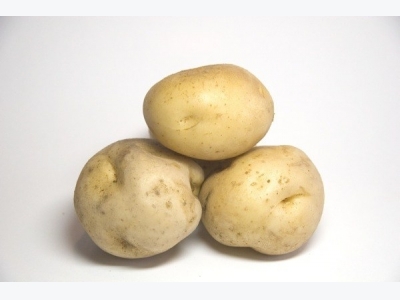Growing Potatoes From Store Bought Potatoes

When deep winter snows cover the ground, many of us tend to dream of harvesting succulent fresh vegetables and fruits.
Potatoes taunt us because they are a staple food in many people’s diets. As the eyes start to sprout, we are reminded of the gardening season that lies ahead. For some, the temptation of passing up something that is sprouting life is just too much of a temptation, so out comes the flowerpots and potting soil. Why not plant those sprouting potatoes?
Experts disagree on whether or not store bought potatoes should be planted. While many say store bought potatoes are grown to be eaten and not planted, others report that they have grown a fine crop of tubers. If you are bound and determined to try your hand at growing those sprouting potatoes, take the project on as though it is an experiment and be sure to plant some seed potatoes too.
There is no real advantage to growing potatoes from store bought ones (those soft, sprouting grocery store potatoes will make good compost). Seed potatoes are no more expensive than the ones purchased for eating. In addition, garden centers usually offer a variety of certified seed potatoes to choose from.
Another advantage of certified seed potatoes is that they are free of seed-borne diseases and have been developed to produce high yields and superb quality. Store bought eating potatoes may have been treated to prevent sprouting, thus minimizing any yield if you’re lucky enough to get any potatoes at all. (Sprout inhibitors are designed to shelf life of the potatoes).
At the very least, use organic potatoes because they have not been treated.
It is important to note that not all gardeners will agree that you need to buy certified seed potatoes. However, if you feel the urge to grow those sprouting potatoes from the supermarket, plant certified seed potatoes too. You can make your own decisions as to the success of growing store bought eating potatoes after a growing season or two have passed.
Some gardeners will be tempted to plant last year’s homegrown harvest of potatoes. While these may not be treated, they could be host to undetectable diseases that will later plague your potato crop, and possibly, other garden plants. Remember hearing stories of the great potato famine?
If you do plant store bought potatoes, do not cut them up. The whole potatoes seem to do better at resisting rot. Fewer pests bother whole potatoes.
In climates with short springs and hot summers, try planting early and mid-season varieties for the best results. Plant them three to four weeks before the last spring frost date.
In climates with long springs and hot summers, the same planting schedule will work. However, late maturing varieties can be planted in early summer for fall harvesting.
In climates with cool summers, plant all varieties two to three weeks before the last spring frost date.
Prepare the planting are by loosening the soil 10 to 12 inches deep. Mix a layer of compost with a fertilizer high in nitrogen. Cover the potato pieces with about an inch of soil. As the sprouts emerge, mound dirt by pushing it up around the stem. Eventually, it will look as though you planted the spuds in hills.
Related news
 How to Grow Oleander
How to Grow Oleander Oleander is a shrub or small tree that blooms in summer with large, striking flowers in shades of red, white, light yellow, and pink
 How to grow blueberries
How to grow blueberries Fresh blueberries are a recent addition to Australian fruit bowls and are rarely grown in home gardens. However, as the succulent fruit becomes increasingly
 10 Types of Garden Squash
10 Types of Garden Squash Whether you prefer it steamed, sautéed, baked or in bread, squash is one of Mother Nature’s super foods. Squash is high in vitamin A, antioxidants and fiber.